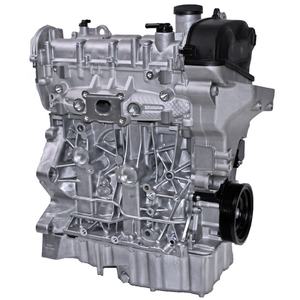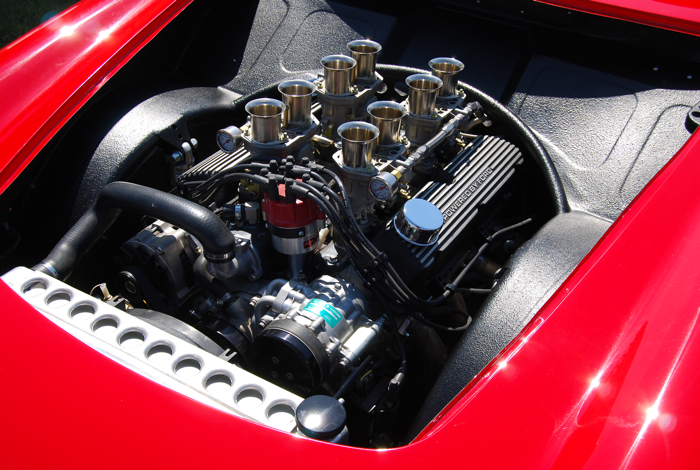Opel Corsa Engine: Common Issues and Just How to Repair Them
Opel Corsa Engine: Common Issues and Just How to Repair Them
Blog Article
Effective and effective Small Automobile Motor Efficiency Analysis
Examining the performance of small car electric motors is a nuanced job that requires an eager eye for information and a deep understanding of auto engineering concepts. The equilibrium between effectiveness and power is important for delivering a driving experience that is both enjoyable and economical when it comes to small vehicles. By examining key metrics such as horsepower and torque, along with evaluating gas performance, we can uncover understandings right into how small car engines can be maximized for peak performance. Furthermore, discovering future patterns in tiny automobile electric motor technology guarantees to reveal ingenious strategies that can reshape the landscape of automotive design.

Tiny Automobile Motor Performance Metrics
In examining the efficiency of tiny cars and truck electric motors, vital metrics such as acceleration, gas performance, and power output play a vital role in identifying their total efficiency and viability for different driving conditions. Velocity, gauged in secs from 0 to 60 miles per hour, shows exactly how rapidly a little car can get to higher speeds, which is crucial for merging onto freeways or overtaking various other vehicles. Gas efficiency, generally gauged in miles per gallon (MPG), shows just how much a tiny auto can take a trip on a gallon of gas, affecting running costs and ecological sustainability. Power result, shared in horsepower (HP) or kilowatts (kW), signifies the engine's ability to produce the necessary force to push the vehicle, affecting its efficiency in different roadway conditions. By examining these performance metrics comprehensively, manufacturers, motorists, and automobile lovers can make educated choices pertaining to the option and optimization of little auto motors to fulfill their details requirements and preferences.

Horsepower and Torque Evaluation
With an essential function in recognizing little auto electric motor horse power, torque and efficiency analysis supplies insight into the engine's power shipment qualities. Horse power is a dimension of the engine's capacity to do persuade time, standing for the price at which job is done. In the context of tiny automobile electric motors, horse power is critical for figuring out acceleration, leading rate, and overall efficiency. Torque, on the various other hand, measures the engine's rotational pressure, showing its capability to get over resistance. Tiny auto engines with higher torque values commonly feel more responsive and provide much better acceleration, making them optimal for city driving and overtaking maneuvers. When evaluating horse power and torque in tiny automobile electric motors, it is necessary to consider exactly how these metrics interact to deliver a efficient and balanced driving experience. By recognizing the connection between horse power and torque, automotive designers can optimize engine efficiency to satisfy the certain needs of small vehicle applications.
Gas Efficiency Assessment
The examination of gas performance in tiny automobile motors plays an essential function in establishing their environmental and economic impact. Gas performance describes the capacity of a lorry to utilize fuel efficiently in regard to the range took a trip. In little automobile motors, where portable size frequently associates with far better fuel economy, numerous aspects affect efficiency. Engine style, weight, the rules of aerodynamics, and driving conditions all add to exactly how successfully fuel is taken in.
Little car electric motors that accomplish higher MPG scores are taken into consideration more fuel-efficient, resulting in price financial savings for motorists and minimized emissions that profit the setting. Suppliers continually make every effort to boost fuel efficiency through innovations in engine technology, light-weight materials, and wind resistant layouts.

Maximizing Tiny Vehicle Engine Efficiency
Enhancing the performance of little car engines is paramount in optimizing performance and lessening operational costs. Enhancing little car engine performance includes an alternative technique that takes into consideration numerous aspects such as engine style, gas administration systems, and total automobile characteristics. One essential facet of maximizing engine performance is guaranteeing proper upkeep timetables are complied with, consisting of regular oil adjustments, filter substitutes, and trigger plug evaluations. In addition, tuning the engine to operate at its peak efficiency can significantly boost total efficiency.
An additional crucial consider maximizing little cars and truck engine performance is the utilization of advanced modern technologies such as turbocharging or crossbreed systems. These technologies can boost power output without jeopardizing gas effectiveness, providing an equilibrium between efficiency and economic situation. Enhancing engine performance additionally involves improving burning performance, decreasing frictional losses, and boosting thermal administration systems.
Future Trends in Small Vehicle Motors
Taking into account progressing automotive modern technologies and the continuous quest of optimum tiny automobile engine efficiency, an expedition of future trends in tiny car motors comes to be crucial - opel corsa engine. One noticeable trend imminent is the enhancing integration of electrical powertrains in tiny cars and trucks. As the vehicle sector changes towards sustainability and decreased exhausts, even more small vehicle manufacturers are buying electric motor innovation to boost effectiveness and ecological kindness
One more significant click over here now pattern is the advancement of smaller sized yet extra powerful turbocharged engines for small vehicles. By scaling down engine capabilities and integrating turbocharging technology, automakers can achieve greater power results while keeping fuel effectiveness. This trend aligns with the growing consumer need for tiny cars and trucks that deliver a dynamic driving experience without jeopardizing on fuel economy.
In addition, the introduction of hybrid powertrains in tiny vehicles is anticipated to gain traction in the future. Crossbreed systems provide the benefits of both interior burning engines and electric motors, offering better performance and fuel effectiveness. As developments in battery technology continue, small automobile motors are most likely to become a lot more powerful and reliable, dealing with the evolving needs of customers and governing demands for cleaner transportation solutions.
Conclusion
Finally, the evaluation of tiny vehicle motor efficiency metrics such as torque, gas, and horse power efficiency is crucial in optimizing engine efficiency. By evaluating these aspects, suppliers can boost the general efficiency and power outcome of little cars and truck electric motors (opel corsa engine). Future patterns in tiny cars and truck motors are most likely to focus on boosting performance while keeping gas effectiveness, making certain that small autos continue to be a economical and trustworthy option for consumers
By taking a look at key metrics such as horse power link and torque, as well as assessing gas efficiency, we can reveal insights right into just how small vehicle engines can be enhanced for peak performance. Maximizing small auto engine efficiency includes an all natural technique that takes into consideration various variables such as engine design, gas management systems, and overall car dynamics.In light of progressing automobile technologies and the continual quest of optimal small automobile engine efficiency, an exploration of future trends in small car electric motors comes to be essential.In verdict, the news analysis of little vehicle electric motor performance metrics such as gas, torque, and horse power performance is crucial in enhancing engine efficiency. Future patterns in small car motors are most likely to concentrate on boosting efficiency while preserving gas effectiveness, making certain that tiny cars continue to be a cost-effective and reliable option for customers.
Report this page